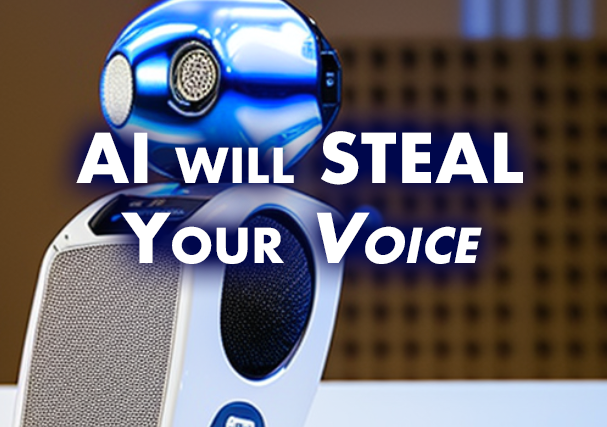Exploring AI Voice Synthesis: The Future of Speech Technology
Written on
Chapter 1: The Rise of Voice Synthesis Technology
Is the voice you hear truly yours? Recent advancements in AI have made it possible for software to mimic a person's voice using just a brief audio clip of three seconds. This raises intriguing questions: Is this an exciting development or a cause for concern?

VALL-E (pronounced “valley”) represents a cutting-edge AI model developed by researchers at Microsoft. It has the remarkable ability to produce synthetic speech that closely resembles a specific individual's voice. By training on a dataset of audio recordings of a person's speech, VALL-E can generate new audio that captures the unique qualities of that voice. One of its promising applications is in enhancing text-to-speech systems, enabling the conversion of written content into spoken form. Other potential uses include audio editing, allowing for modifications of recorded speech based on written transcripts, and content creation when used alongside other AI frameworks, such as GPT-3 (Generative Pre-trained Transformer 3). However, it's crucial to note that VALL-E is still in the experimental phase and is not yet available for commercial purposes.
VALL-E is built on a technology known as EnCodec. Unlike traditional text-to-speech methods that manipulate sound waves directly, VALL-E generates audio by breaking down the voice into discrete components, referred to as “tokens.” By analyzing the characteristics of a person’s voice and utilizing training data, the model can synthesize speech that closely mirrors the original voice, even from a limited sample. This allows it to generate audio of the individual saying any phrase while attempting to maintain the speaker's emotional tone.
To develop its speech synthesis capabilities, Microsoft utilized an extensive audio library named LibriLight, compiled by Meta, which contains around 60,000 hours of English speech from over 7,000 speakers. Most of the content in LibriLight is sourced from LibriVox, a collection of public domain audiobooks.
For VALL-E to produce high-quality results, the voice sample used for training must closely align with those in the training dataset. This implies that if provided with a three-second audio clip, the model can only create synthetic speech resembling that voice if it has been trained on sufficient data from someone with a similar vocal quality.
When utilizing the model, researchers need to input a brief audio sample (referred to as the “Speaker Prompt”) along with a text string indicating the desired speech. The model then generates synthetic audio that matches the vocal characteristics and emotional tone of the speaker, as well as the acoustic context of the original sample. For instance, if the input comes from a phone conversation, the generated output will reflect the same acoustic qualities. Additionally, VALL-E can introduce variations in vocal tone by modifying the random seed used in the synthesis process.
It is important to acknowledge that Microsoft has not released the VALL-E code for public experimentation, likely due to concerns regarding potential misuse, including impersonation or voice spoofing. The researchers have pointed out these risks in their findings and suggest the possibility of developing detection models to differentiate between synthetic and genuine audio. They plan to adhere to Microsoft’s AI Principles as they continue to advance the model.
Personally, I find it challenging to determine whether this technology will lead to positive or negative outcomes. Like many advancements in AI, its impact may ultimately depend on how it is used.
Earlier this year, Disney Plus's Kenobi featured Darth Vader's voice, which was replicated using AI to echo James Earl Jones's iconic bass tones, a process conducted with the actor's permission. As this technology becomes increasingly accessible, it will be essential to prioritize obtaining consent rather than relying on forgiveness.
Chapter 2: Insights from the Experts
The first video, "Google's NEW AI Clones Voices with only 3 Seconds of Audio!" delves into how AI can replicate voices with minimal input, showcasing the capabilities and implications of such technology.
The second video, "OpenAI Can Clone Your Voice with 15 Seconds of Audio," explores another dimension of voice synthesis, discussing the potential and ethical considerations of voice cloning technology.
If you found this article interesting, please show your support by clapping and following me on Medium! Thank you!